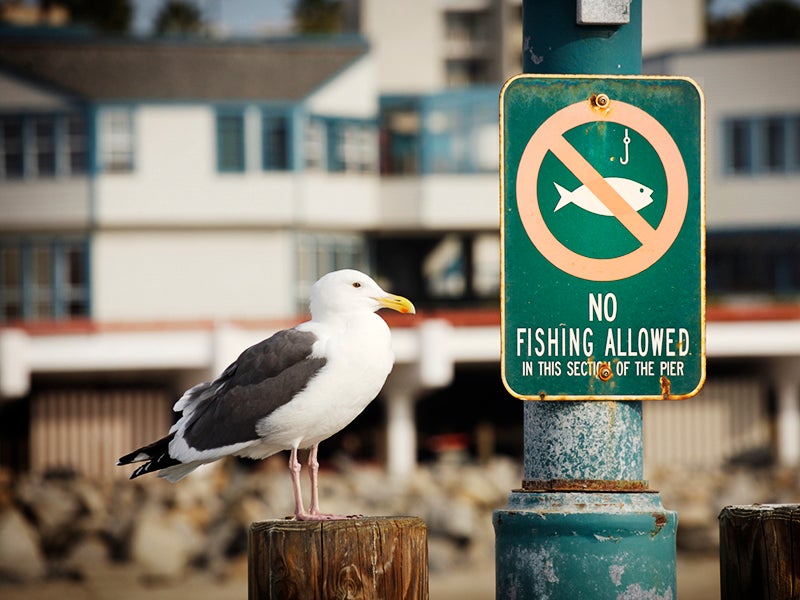Ask First, Fish Later
Protecting tiny forage fish is good for the ecosystem and the economy.

This page was published 9 years ago. Find the latest on Earthjustice’s work.
In a pioneering decision made last week, the National Marine Fisheries Service finalized a rule to protect dozens of species of small fish and squid that are an important part of the menu for seabirds, whales and bigger fish. The decision marks an important first step in shifting away from the too little, too late approach to fisheries management that too often results in overfishing and collapsed stocks.
Earthjustice and its partners undertook a multiyear advocacy effort to convince the Pacific Fishery Management Council and the fisheries service to protect these silvery little energy sources from unregulated fishing. Thanks to that effort—and to the over 12,000 Earthjustice supporters who responded to a recent Action Alert—the fisheries service decided to think big and plan ahead by preemptively banning the commercial fishing for currently unfished, unmanaged forage species.
Forage fish, also known as bait fish, are what other fish eat. Salmon, halibut and tuna all depend on a steady and abundant supply of smaller fish for sustenance. Forage fish also nourish seabirds and marine mammals. But increasingly, reports of starving sea lions warn us that we are already taking too many of these fish out of the ocean. Years of overfishing resulted in the collapse of the Pacific sardine population and the closure of the Pacific sardine fishery last spring. Fishery managers recently determined that the fishery would have to remain closed for another year because the population hasn’t rebounded. The recent nosedive in sardine and anchovy populations highlights the importance of making sure other forage species are protected so that hungry predators have alternative food sources available.
Forage fish account for roughly 35 percent of the global fishing industry’s annual catch. They are mostly converted into meal and oils, used as feed for livestock and rapidly growing finfish aquaculture operations or used as bait. But forage fish are much more valuable when left in the oceans as part of healthy, thriving ecosystems that support more commercially valuable predator fish, such as salmon. And by providing food for whales and seabirds that attract well-paid wildlife watching tours, forage fish can also boost tourism dollars.
Traditionally, fishing has been allowed unless (or until) it’s been proven to cause harm. When things go wrong, as they have in recent years, industry and government are caught in the uncomfortable position of trying to alleviate environmental collapse and economic pain after the damage is already done.
The fisheries service and the Pacific Fishery Management Council are proactively protecting species critical to the ocean ecosystem, rather than waiting for drastic declines to ripple through the marine food web (and fishing communities). Under the recently promulgated rule, the impacts of fishing forage species must be scientifically evaluated before a fishery is opened. Fishing will be allowed only after it’s been shown to be sustainable. The rule will protect dozens of species, including saury, sand lance, silverside, smelt, lanternfish and flying squid, before they become targets.
This marks an important shift—perhaps even a turning point—toward a more comprehensive, ecosystem-based approach to fishery management. It recognizes that responsible, science-based management requires understanding the effects of fishing before a fishery develops, rather than as an afterthought.
Though this new measure will not affect forage species currently in trouble, such as anchovies and sardines, it’s worth wondering whether we’d be faced with fishery closures and crisis management now if managers had approached today’s problem fisheries in the same manner years ago. We continue to work to reform fishery management for key forage species, such as anchovy and sardine, to align it with sound science, as well as a level of precaution appropriate for safeguarding the fish that are the foundation of the food web.
This “ask first, fish later” approach is precisely the sort of common-sense measure that Earthjustice and its allies have been advocating for years. It sets a shining example that protects not only fish, seabirds and marine mammals, but also the coastal communities and businesses that depend on healthy oceans. This is just the beginning, and we will continue to work hard to ensure that similar measures are adopted across the nation. We hope you will continue to help us as well.
As a former commercial fisherman, current sport fisherman and a professor of behavioral biology in a graduate program, I believe we should be using the best available science to manage fisheries for long-term sustainability and biological diversity. Protection of ‘forage fish’ is a critical component in the planning and management process.” – Eric C., California
One of the more than 12,000 comments our supporters submitted in support of this rule.
Earthjustice’s Oceans Program uses the power of the law to safeguard imperiled marine life, reform fisheries management, stop the expansion of offshore oil and gas drilling, and increase the resiliency of ocean ecosystems to climate change.